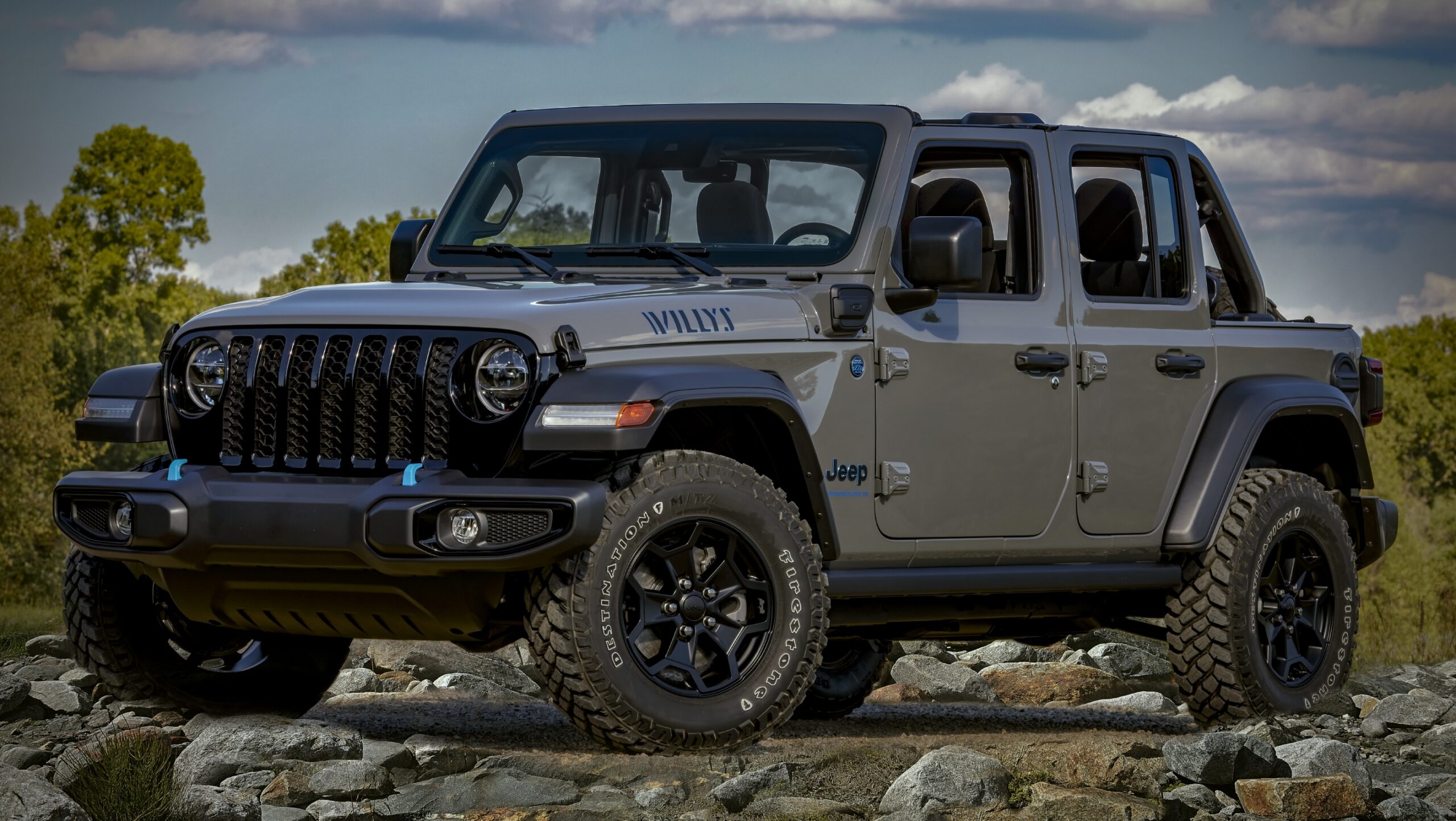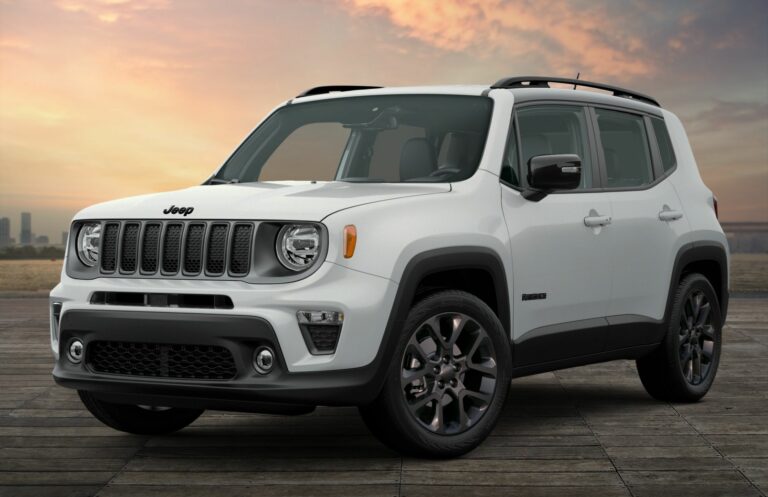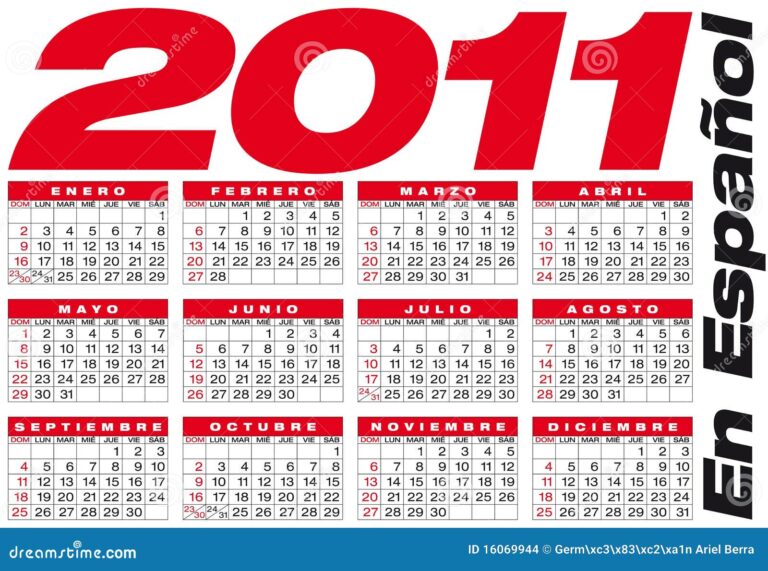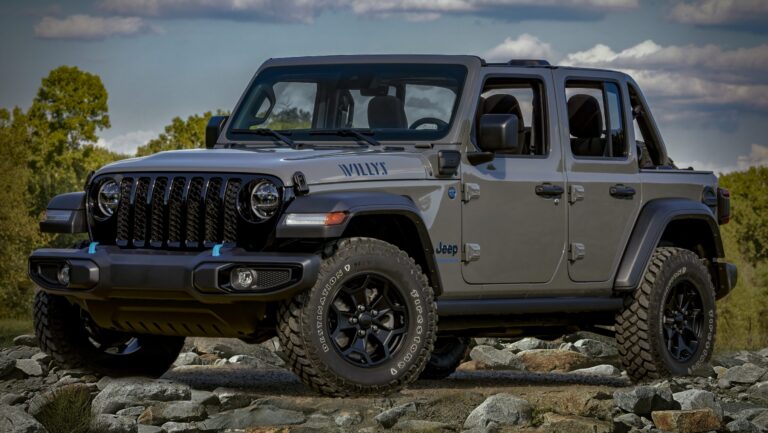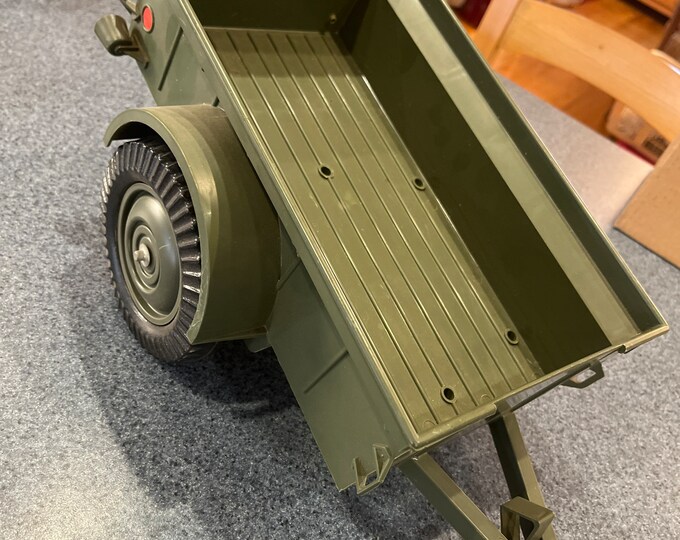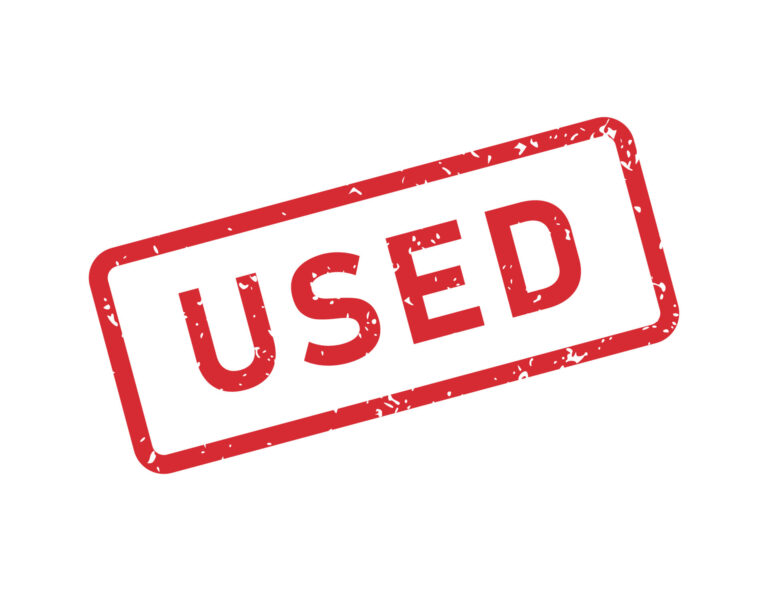Jeep Dana 44 Front Axle For Sale: Your Ultimate Guide to a Stronger Foundation
Jeep Dana 44 Front Axle For Sale: Your Ultimate Guide to a Stronger Foundation jeeps.truckstrend.com
For any serious Jeep enthusiast, the phrase "Jeep Dana 44 Front Axle For Sale" often signals an exciting upgrade opportunity. More than just a collection of metal and gears, the Dana 44 front axle represents a significant leap in durability, performance, and peace of mind for off-road adventures. While many Jeeps come equipped with the capable, but less robust, Dana 30 front axle, the Dana 44 has long been the gold standard for those pushing their vehicles harder, running larger tires, or simply seeking a more resilient foundation for their build.
This comprehensive guide will delve deep into everything you need to know when you’re considering a Jeep Dana 44 Front Axle For Sale. From understanding its benefits to navigating the various types and crucial buying considerations, we’ll equip you with the knowledge to make an informed decision that will elevate your Jeep’s capabilities.
Jeep Dana 44 Front Axle For Sale: Your Ultimate Guide to a Stronger Foundation
Why the Dana 44 is the Go-To Axle for Jeeps
The Dana 44 has earned its legendary status in the off-road world for a reason. Compared to its smaller sibling, the Dana 30, it boasts several key advantages that make it an indispensable upgrade for many Jeep owners:
- Increased Strength: The most significant benefit. The Dana 44 features a larger ring and pinion gear, stronger axle tubes, and often larger axle shafts. This translates directly to a higher torque capacity, significantly reducing the risk of gear or shaft failure, especially when running larger tires (35 inches and above) or tackling challenging obstacles.
- Larger Components: Beyond just the ring and pinion, the Dana 44 typically has larger carrier bearings, more robust axle shafts, and a larger housing, all contributing to its superior strength and longevity.
- Better Aftermarket Support: Due to its popularity, the market for Dana 44 upgrades and replacement parts is vast. This means a wide array of lockers, gear ratios, heavy-duty axle shafts, and even complete aftermarket housings are readily available, allowing for endless customization and enhancement.
- Versatility: Whether you’re looking for a simple bolt-in upgrade for your JK Wrangler Rubicon or a full-width axle for a custom buggy, the Dana 44’s adaptability makes it a versatile choice for various Jeep platforms and build styles.

In essence, when you invest in a Jeep Dana 44 Front Axle For Sale, you’re not just buying a part; you’re buying enhanced reliability and the freedom to push your Jeep further.
Understanding Your Needs: When to Upgrade to a Dana 44
Deciding when to seek a Jeep Dana 44 Front Axle For Sale depends largely on your intended use and current vehicle setup. Here are some common scenarios that warrant the upgrade:
- Tire Size: If you plan to run tires 35 inches or larger, a Dana 44 becomes almost a necessity. The increased leverage and stress from larger tires can quickly overwhelm a stock Dana 30, leading to broken axle shafts, bent housings, or differential failure.
- Off-Road Intensity: Frequent rock crawling, heavy articulation, or challenging trails that require locking differentials put immense strain on your axles. A Dana 44 is far better equipped to handle these demands.
- Adding Lockers or Lower Gearing: Installing a locker (e.g., ARB, Eaton, Detroit) significantly increases the stress on your axle components. If you’re going to invest in a locker, it makes sense to pair it with an axle that can handle the increased strain. Similarly, re-gearing to a lower ratio (e.g., 4.88, 5.13) to compensate for larger tires also increases torque at the axle, benefiting from the Dana 44’s robust design.
- Replacing a Damaged Axle: If your current front axle is bent, has a cracked housing, or has suffered significant damage, opting for a Dana 44 replacement is an intelligent upgrade rather than simply replacing it with another Dana 30.
- Custom Build: For those building a highly capable custom off-road rig from the ground up, starting with a strong foundation like a Dana 44 (or larger) is a logical first step.


Types and Sources of Dana 44 Front Axles for Sale
The market for a Jeep Dana 44 Front Axle For Sale is diverse, offering options for every budget and build.
-
New Aftermarket Axles:
- Description: These are brand-new, often heavy-duty housings from reputable manufacturers. They can be purchased as bare housings or fully assembled with your choice of gears, lockers, and axle shafts.
- Pros: Brand new, no wear and tear, often stronger than OEM (thicker tubes, reinforced knuckles), customizable, warranty.
- Cons: Highest cost.
- Examples: Dynatrac ProRock 44, Currie RockJock 44, G2 Axle & Gear, TeraFlex CRD60/44.
- Best For: Serious builders, those seeking ultimate strength and customization, or anyone who wants a "bolt-in and forget it" solution with maximum peace of mind.
-
Used OEM Dana 44 Axles:
- Description: Pulled from donor vehicles. The most common source for Jeep owners is a JK Wrangler Rubicon, TJ Wrangler Rubicon, or even older XJ Cherokees (some models) and Grand Wagoneers. Older Ford and Dodge trucks also used Dana 44s, which are often used for full-width conversions.
- Pros: Most cost-effective option, readily available.
- Cons: Condition varies wildly, almost always requires a full rebuild (new seals, bearings, ball joints, potentially gears/locker), may need custom mounting brackets or modifications to fit your specific Jeep model.
- Best For: Budget-conscious builders, those comfortable with significant DIY work, or looking for a project.
-
Rebuilt/Refurbished Axles:
- Description: These are used OEM axles that have been professionally rebuilt by a shop or individual. They often come with new internal components, seals, and sometimes upgraded axle shafts or chosen gear ratios.
- Pros: Better condition than "as-is" used, often includes desired gear ratios/lockers, good balance between cost and reliability.
- Cons: Price is higher than "as-is" used, quality depends on the rebuilder, still a used housing.
- Best For: Those who want a plug-and-play solution without the full cost of a new aftermarket axle, or for a faster installation.
-
"Bolt-In" vs. "Weld-In" Solutions:
- Bolt-In: Designed to directly replace your stock axle with minimal fabrication. Common for JK Rubicon axles into non-Rubicon JKs, or specific aftermarket solutions.
- Weld-In: Often used when adapting an axle from a different vehicle (e.g., a Ford Dana 44 into a TJ) or for custom builds where all brackets need to be fabricated and welded onto the axle tubes. This requires significant welding and fabrication skills.
Key Considerations When Buying a Dana 44 Front Axle
When you find a promising Jeep Dana 44 Front Axle For Sale, don’t jump the gun. Thoroughly evaluate these critical factors:
- Axle Width: This is paramount. Do you want to maintain your stock width, go slightly wider for stability, or opt for a full-width setup? JK Rubicon Dana 44s are wider than TJ/YJ/XJ Dana 44s. Ensure the width matches your tire clearance and desired stance.
- Gear Ratio: Crucial for matching your rear axle (unless you’re replacing both). If the front axle has a different ratio than your rear, your 4WD will be unusable. If buying used, confirm the ratio or factor in the cost of re-gearing.
- Locker/Limited Slip: Does it come with a locker or limited-slip differential? If so, what type? This can significantly add to the value or save you money on a separate purchase.
- Condition (for used axles):
- Rust: Surface rust is common, but heavy pitting or structural rust is a red flag.
- Bent Tubes: Visually inspect the axle tubes for any bowing or kinks. This is a deal-breaker.
- Worn Ball Joints/Unit Bearings: Check for play. These are replaceable but add to the cost.
- Leaky Seals: Indicates worn seals that will need replacing.
- Pinion Play: Excessive play in the pinion indicates worn bearings, which requires a full differential rebuild.
- Mounting Brackets: Are the control arm mounts, track bar mount, coil spring perches, and shock mounts included and correct for your specific Jeep model (JK, TJ, YJ, XJ, CJ)? If not, you’ll need to fabricate or purchase new ones, which adds significant cost and complexity.
- High-Pinion vs. Low-Pinion: Most front Dana 44s are high-pinion (reverse cut gears) for better driveshaft angle and gear strength under forward load. Low-pinion axles are typically rear axles but can be found in some front applications. Understand the difference and ensure it’s what you need.
- Axle Shafts: Are they stock or upgraded chromoly? Upgraded shafts add value and strength.
- Brakes: Will your existing brakes bolt on, or will you need new calipers, rotors, and pads?
- Shipping/Local Pickup: Axles are heavy and bulky. Factor in freight shipping costs if not picking up locally.
Installation and Post-Purchase Tips
Once you’ve secured your Jeep Dana 44 Front Axle For Sale, the next step is installation.
- Professional Installation vs. DIY: Unless you have significant mechanical experience, a well-equipped garage, and the necessary tools (including a welder if fabricating brackets), professional installation is recommended. Axle swaps involve critical suspension, steering, and braking components.
- Additional Components: Be prepared to potentially replace or upgrade other components:
- Driveshaft: You may need a new length or yoke style.
- Brake Lines: Longer or different fittings might be required.
- Steering Components: Tie rod, drag link, and possibly steering box modifications might be necessary, especially with wider axles.
- Gear Break-In: If you’ve installed new gears, follow the manufacturer’s break-in procedure (typically several heat cycles and short drives) to ensure proper seating and longevity.
- Alignment: After any axle swap, a professional alignment is crucial to ensure proper steering geometry and tire wear.
Practical Advice and Actionable Insights
- Set a Realistic Budget: Don’t just budget for the axle itself. Factor in shipping, rebuild kits, new gears, lockers, axle shafts, brake components, driveshafts, and potential professional labor.
- Do Your Research: Understand which donor vehicles offer the best compatibility for your specific Jeep model. Forums and online communities are invaluable resources.
- Inspect Thoroughly (for used): If buying in person, bring a friend, a flashlight, and get under the axle. Ask questions, take pictures, and don’t be afraid to walk away if something feels off.
- Don’t Compromise on Quality: While saving money is good, skimping on critical components like an axle can lead to dangerous failures on the trail.
- Consider the "Total Cost of Ownership": A cheap "as-is" used axle might seem like a bargain, but once you add the cost of a full rebuild, new gears, and possibly a locker, a pre-built or even new aftermarket axle might be more cost-effective in the long run.
Price Table: Jeep Dana 44 Front Axle For Sale
| Category | Description | Estimated Price Range | Notes |
|---|---|---|---|
| Used OEM (as-is) | Pulled from donor vehicle (e.g., JK Rubicon, TJ Rubicon, XJ). Condition varies. | $500 – $1,500 | Likely requires a full rebuild (seals, bearings, ball joints), possibly new gears/locker. May need custom brackets for your application. |
| Used OEM (Rebuilt/Bare) | Professionally rebuilt housing (new seals, bearings), no gears/locker installed. | $1,200 – $2,500 | Good starting point for a build. Still requires investment in internals. |
| Used OEM (Rebuilt/Complete) | Professionally rebuilt, with new gears, and possibly a locker. Bolt-in ready for specific applications. | $2,500 – $4,500 | Offers more immediate use. Verify quality of rebuild and components. Often comes with specific gear ratios. |
| New Aftermarket (Bare Housing) | Brand new, heavy-duty housing from a reputable manufacturer (e.g., Dynatrac, Currie, G2). | $1,500 – $3,000 | Stronger than OEM, but requires all internal components (ring & pinion, carrier, axle shafts, knuckles, brakes). |
| New Aftermarket (Complete) | Brand new, fully assembled axle with your choice of gears, locker, axle shafts, and often brakes. | $4,000 – $8,000+ | Highest quality and strength. Custom-built to your specifications. "Bolt-in" ready. Price varies significantly based on chosen components (e.g., chromoly shafts, high-end lockers). |
| Custom Fabricated Axles | Heavily modified or custom-built Dana 44, often with trussing, specific widths, or unique mounting. | $6,000 – $10,000+ | For extreme builds or highly specific applications. Often involves significant labor and specialized components. |
Note: Prices are estimates and can vary widely based on location, condition, seller, brand, and included components. Always factor in potential shipping costs.
Frequently Asked Questions (FAQ)
Q: Can I just swap a Dana 44 into my Jeep?
A: It depends on your Jeep model and the donor Dana 44. A JK Rubicon Dana 44 can be a relatively straightforward "bolt-in" for a non-Rubicon JK. However, putting a TJ or XJ Dana 44 into a YJ, or any older truck Dana 44 into a newer Jeep, will almost certainly require significant fabrication (welding new mounting brackets) and potentially driveline modifications.
Q: What’s the difference between a high-pinion and low-pinion Dana 44?
A: A high-pinion (often called "reverse cut") Dana 44 has the pinion gear positioned higher on the differential housing. This improves driveshaft angle, reduces wear on the U-joints, and, more importantly, provides a stronger gear mesh under forward acceleration (the "drive side" of the gear teeth is used). Most front Dana 44s are high-pinion. A low-pinion (standard cut) Dana 44 has the pinion gear centered or lower. These are typically used in rear axles where the drive load is on the opposite side of the gear teeth.
Q: Do I need a new driveshaft after installing a Dana 44?
A: Very likely. The new axle may have a different pinion yoke, or the overall length might change due to the new axle’s dimensions or lift changes made during the swap. It’s best to measure for a new driveshaft once the axle is installed and the vehicle is at ride height.
Q: How much stronger is a Dana 44 than a Dana 30?
A: Significantly stronger. The Dana 44 uses a larger ring gear (8.5 inches vs. 7.125 inches for the Dana 30), larger axle shafts, and a more robust housing. While exact strength ratings vary, a Dana 44 is generally considered capable of handling 35-inch tires reliably, whereas a Dana 30 is typically limited to 33-inch tires, especially with aggressive off-roading.
Q: Where are the best places to find a Jeep Dana 44 Front Axle For Sale?
A:
- Online Forums/Marketplaces: Dedicated Jeep forums (e.g., JK-Forum, JL Wrangler Forums, Pirate4x4) and general marketplaces (Craigslist, Facebook Marketplace) are excellent for used axles.
- Salvage Yards/Junkyards: A traditional source for used OEM parts.
- Off-Road Shops/Specialty Retailers: For new aftermarket axles or professionally rebuilt used axles.
- Dedicated Part-Out Groups: Facebook groups specifically for Jeeps being "parted out" can be a goldmine.
Conclusion
Investing in a Jeep Dana 44 Front Axle For Sale is one of the most impactful upgrades you can make to your off-road vehicle. It’s a commitment to durability, performance, and the confidence to tackle more challenging terrain. While the journey from finding the right axle to its successful installation can be complex, the rewards—a stronger, more capable Jeep—are well worth the effort. By thoroughly researching your options, understanding the key considerations, and planning for the entire project, you’ll ensure your Jeep is built on a foundation that will serve you well for countless adventures to come. Happy hunting for your ultimate axle upgrade!

